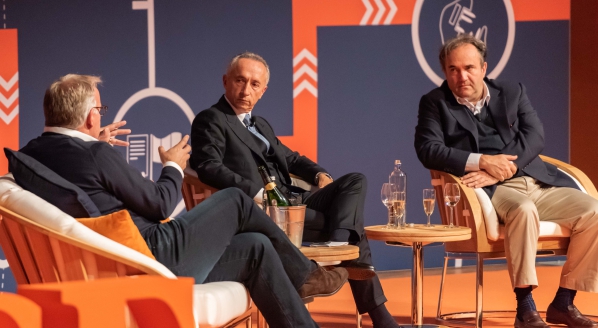Superyacht fires: lessons to learn from the cruise industry
Adam Whittle, group marketing manager at Brookes Bell, discusses yacht fires and The Superyacht Forum…
It was interesting to see how The Perfect Customer Journey could be explored through the various services available throughout the many stages of a superyacht’s life at The Superyacht Forum 2018. From how to engage a potential owner or charter customer with new tech platforms as a contemporary alternative to traditional charter models, to the passage of the yacht itself through unchartered depths with submersibles and taking on the Antarctic.
The audience was often visibly blown away by the no-holds-barred criticism of the industry. Yet, there were also plenty of positive discussions around responsible yacht use, protecting the environment and crew welfare.
The event shone a light on how the customer can be engaged at different stages of their own life – from accumulating and investing wealth to philanthropy and expeditions. TSF really did cover a lot of ground.
Lessons learned from the 300m+ cruise ship market
Brookes Bell Senior Partner, Ray Luukas, took the stage during a panel discussion entitled ‘Fires on Superyachts’. Unfortunately, fires have become more commonplace in recent years. There was lively discussion around risk assessments of specific areas onboard and implementation of prevention systems and procedures. The audience was surprised by some of the stories and statistics shared, and how simple preventative measures are still not widespread in the superyacht industry.
“Something that is common to many superyacht fires is the complete and uncontrolled spread of fire through the vessels,” started Dr James Kelman of the Minton, Treharne & Davies Group while showing delegates images of high-profile superyacht fires. “Fire, once it has broken out in a vessel and established itself, becomes widespread, after which it often transfers across to other yachts in close proximity, frequently resulting in complete losses.”
Luukas explained: “We see there as being two types of superyacht fire, pre-delivery and in-service fires. On the pre-delivery side, what we are looking at here is design issue. New builds are being delivered often with effects, such as poor wiring or lacking proper earther connections and so forth, which can lead to fires breaking out even on brand new ships.”
The good news is, much of the best practice and the rigorous safety procedures from the cruise liner industry can be emulated on superyachts, after all the finest modern cruise ships are essentially gigantic superyachts at over 300m long. In order to prevent fires at the design stage, the superyacht market, especially for the largest vessels, should adopt the computerised risk assessment models used by the commercial sector.
“You look at the specific areas and the likelihood that fires will break out in these spaces, determining which areas are high risk, the probability of escalation and the impact, be it on people or the asset itself,” continues Luukas. “You can look at fire hazards and the functions of space use. This is clearly for passenger ships,” he says highlighting an example slide at TSF, “but it is equally applicable to particularly large superyachts an it is a model that can be easily transferred over. You start with fire outbreak, what are the ignition hazards and fuel loads in a particular space, be it an engine room, laundry room or galley. Once have determined the risk you decide what detections systems you want. Then you look at fire suppression and containment.”
Many more lessons can be learned from the cruise industry, which was a key point raised on another panel session. Brookes Bell’s Dr Kieran Dodworth took the stand to share some of his knowledge, alongside Angela Composto from Ritz Carlton, Terry Allen from McFarlane Ship Designs and superyacht designer Martin Francis.
Our ground-breaking designs and interpretations of the regulations in the commercial and cruise ship sector are becoming increasingly relevant to the superyacht industry as vessel sizes increase and regulations become more restrictive. For example – our work on Symphony of the Seas, allowed the world’s largest passenger ship at 362 metres long to be fully compliant with SOLAS’ Safe Return to port regulations.
Profile links
Click here to become part of The Superyacht Group community, and join us in our mission to make this industry accessible to all, and prosperous for the long-term. We are offering access to the superyacht industry’s most comprehensive and longstanding archive of business-critical information, as well as a comprehensive, real-time superyacht fleet database, for just £10 per month, because we are One Industry with One Mission. Sign up here.
Related news

Teething problems
"As an owner, I tolerate things on boats that I would never tolerate in a house or a car
Business
Related news
Teething problems
5 years ago



